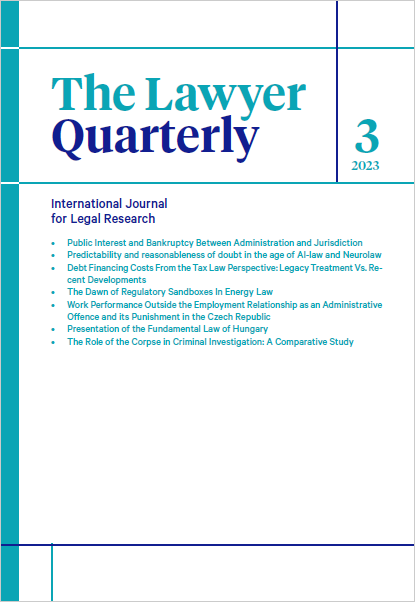PRESENTATION OF THE FUNDAMENTAL LAW OF HUNGARY
Main Article Content
Abstract
My aim in this article is to present the Hungarian Fundamental Law (constitution) to foreigners who have heard little or nothing about it. My aim is to provide a detailed and up-to-date insight and to promote a better understanding and knowledge of this nation. I have published a similar article before but the Fundamental Law has undergone several amendments since then. I will present the content and structure of the Fundamental Law and its amendments so far. The Fundamental Law consists of six parts; first, I will present the National Avowal, which is a declaration of the values professed by the state. Then I am going to present the Foundation, which contains the most basic provisions, such as the form of government or the fundamental constitutional principles. This is followed by a declaration of human rights in the Freedom and Responsibility part. The extensive fourth part, entitled “The State”, gives the basics of the functioning of each state body. Finally, the Special Legal Order part covers exceptional situations that differ from operations in normal times.
Article Details
Copyright and originality of the offered manuscript
1. It is assumed that the manuscript offered has not been previously published. It is expected that the authors will inform the editorial board of TLQ if the entire manuscript, its parts or some relevant results have been previously published in a different publication at the level of an article in a reviewed scientific magazine or monograph. Should the editorial board of TLQ conclude that this condition was not fulfilled the review process may be terminated.
2. It is assumed that the submitted manuscript is an original academic work. If that is not the case the author needs to provide information regarding all circumstances that could raise doubts whether the manuscript is the outcome of original research.
3. By submitting the manuscript the author acknowledges that after the publication in The Lawyer Quarterly her/his work will be made available online to the Internet users and also kept by the Library of the Academy of Sciences of the Czech Republic. Author's rights to further use the work remain unabridged.

